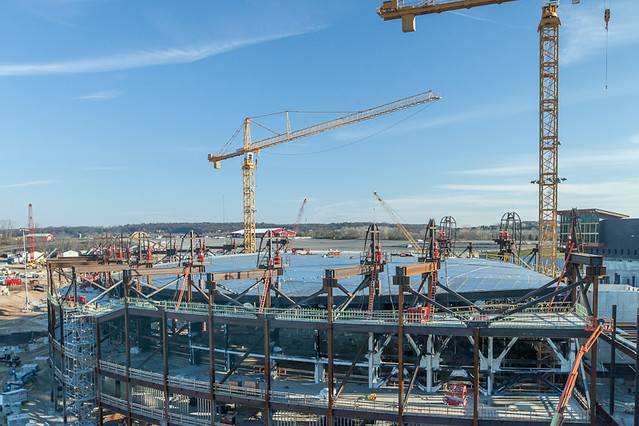Epic Systems has a Roof Raising
How do you build an 11,000+ seat auditorium so that visitors and employees of Epic Systems will be able to walk on the grassy area on the top of the building? You dig a huge hole and build most of the seating area under ground level.
But first, you construct a slightly domed roof on concrete supports at ground level, a roof that weighs nearly 10 million pounds. Then on a calm autumn morning, you assemble skilled engineers and construction workers at the site from around the world, and you crank the roof into the air, inch by inch by inch!
I checked on the progress of the roof on Saturday morning. It was 18 inches from its original resting place.
Auditorium is Aptly Named Deep Space
Twenty four hours later, the roof hovers 80 feet in the air. It will stay there as work progresses to construct the permanent struts underneath. Then the roof will be lowered about 10 feet into its permanent position.
It is hard to imagine the immensity of this auditorium, named Deep Space. It has 1/7th of the number of seats as does Lambeau Field, and its footprint equals 13 football fields. There is still a lot of work to be done, but its completion date is estimated to be less than a year from now.
Beautiful sunny weather and almost no wind provided a perfect setting for the lift. And the roof raising went according to plans. What a lot of work and effort and detailed planning. Wow!
——————
Bo Mackison is a photographer and the owner of Seeded Earth Studio LLC. She has always been fascinated by architecture. How thrilling it was to watch this roof raising!













